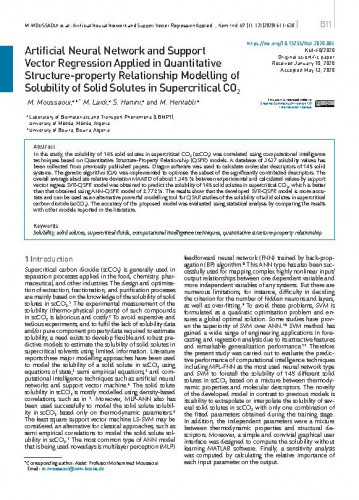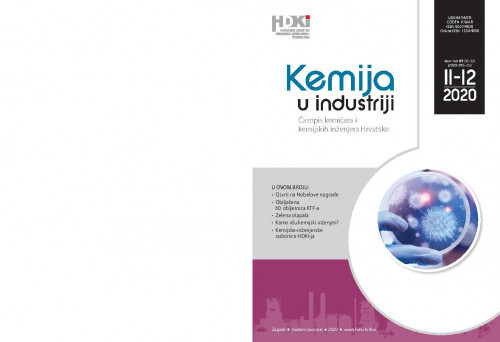In this study, the solubility of 145 solid solutes in supercritical CO2 (scCO2) was correlated using computational intelligence techniques based on Quantitative Structure-Property Relationship (QSPR) models. A database of 3637 solubility values has been collected from previously published papers. Dragon software was used to calculate molecular descriptors of 145 solid systems. The genetic algorithm (GA) was implemented to optimise the subset of the significantly contributed descriptors. The overall average absolute relative deviation MAARD of about 1.345 % between experimental and calculated values by support vector regress SVR-QSPR model was obtained to predict the solubility of 145 solid solutes in supercritical CO2, which is better than that obtained using ANN-QSPR model of 2.772 %. The results show that the developed SVR-QSPR model is more accurate and can be used as an alternative powerful modelling tool for QSAR studies of the solubility of solid solutes in supercritical carbon dioxide (scCO2). The accuracy of the proposed model was evaluated using statistical analysis by comparing the results with other models reported in the literature.; U ovom je istraživanju korelirana topljivost 145 čvrstih otopljenih tvari u superkritičnom CO2 (scCO2) primjenom tehnika računalne inteligencije zasnovanim na modelima kvantitativne strukture i svojstva (QSPR). Baza podataka 3637 topljivosti prikupljena je iz prethodno objavljenih radova. Program Dragon primijenjen je za izračunavanje molekularnih deskriptora 145 čvrstih sustava. Genetski algoritam (GA) implementiran je kako bi se optimizirao podskup deskriptora sa značajnim doprinosom. Ukupno prosječno apsolutno relativno odstupanje MAARD od oko 1,345 % između eksperimentalnih i izračunatih vrijednosti pomoću regresije potpornih vektora modelom SVR-QSPR dobiveno je za predviđanje topljivosti 145 čvrstih otopljenih tvari u superkritičnom CO2, što je bolje od onog dobivenog primjenom modela ANN-QSPR (2,772 %). Rezultati pokazuju da je razvijeni model SVR-QSPR precizniji i da se može primijeniti kao alternativni alat za modeliranje QSAR studija topljivosti otopljenih čvrstih tvari u superkritičnom ugljikovu dioksidu (scCO2). Točnost predloženog modela procijenjena je statističkom analizom uspoređivanjem rezultata s ostalim modelima zabilježenim u literaturi.
Sažetak

 Kemija u industriji : 69,11/12 (2020) / glavni i odgovorni urednik Nenad Bolf.
Kemija u industriji : 69,11/12 (2020) / glavni i odgovorni urednik Nenad Bolf.